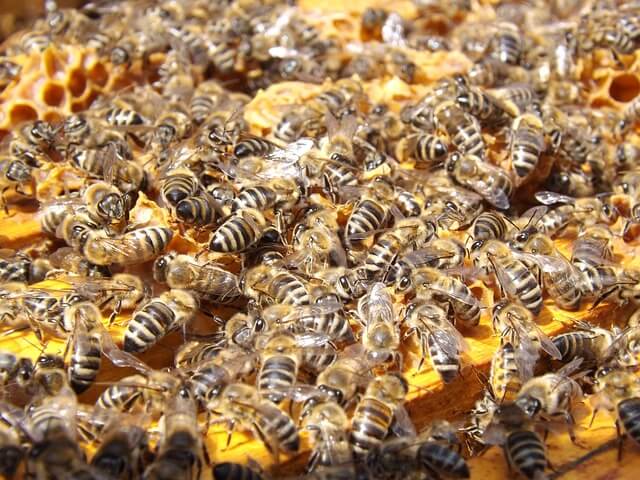How do bees make honey?
Unlike many other bees, honeybees do not hibernate during the winter. Instead, they remain active in hives. During the coldest months, bees huddle together in a cluster to keep warm and survive on the sweet substance they have been stocking up on for weeks. This substance is honey. All bees in the hive benefit from the honey harvest, but the honey production task is left to the female worker bees. These foraging bees fill their stomachs with nectar from flowers before returning to the hive and turning it into honey. Male bees, who make up about 10% of the hive’s population, spend their entire lives consuming this honey before leaving the hive to mate.
There are many factors that determine how much honey a bee colony needs over the winter. It depends on the climate in which the bees live, how well the hive is ventilated, and the number and type of bees in the hive. Honeybees will continue to produce honey until all cells in the hive are full.
After being produced, honey is able to be stored for a very long time. Honeybees reduce the moisture content of honey and add sugars, which greatly limits the ability of bacteria and other microorganisms to grow and spoil the honey. The nectar enters the bee’s stomach before it turns into honey where an enzyme called glucose oxidase aids in honey production by breaking down the nectar.
Honeybees may need to visit more than 1,000 flowers before completely filling their honey stomach. Once full, the bee will return to the hive to begin the process of making honey. The bees then regurgitate the nectar and pass it from mouth to mouth among the bees in the hive to reduce the water content. Each bee may chew the nectar for about 30 minutes.
Sometimes the nectar can be put into an empty cell before giving it to other bees. Bee hive temperatures can exceed 91 degrees Fahrenheit (33 degrees Celsius), which helps evaporate some of the moisture from the honey during storage. Nectar becomes honey when its water content drops from 70% to about 20%. Honey is stored in cells inside the hive until needed.
As new bee larvae develop in individual brood cells, the honey cells are filled in preparation for the arrival of the new bees. As the bee larvae grow and hatch from the cells, the bees feed them the harvested, energy-rich honey. Honey is mixed with pollen to create “bee bread” that contains additional nutrients (proteins, carbohydrates, fats, minerals and antioxidants).

